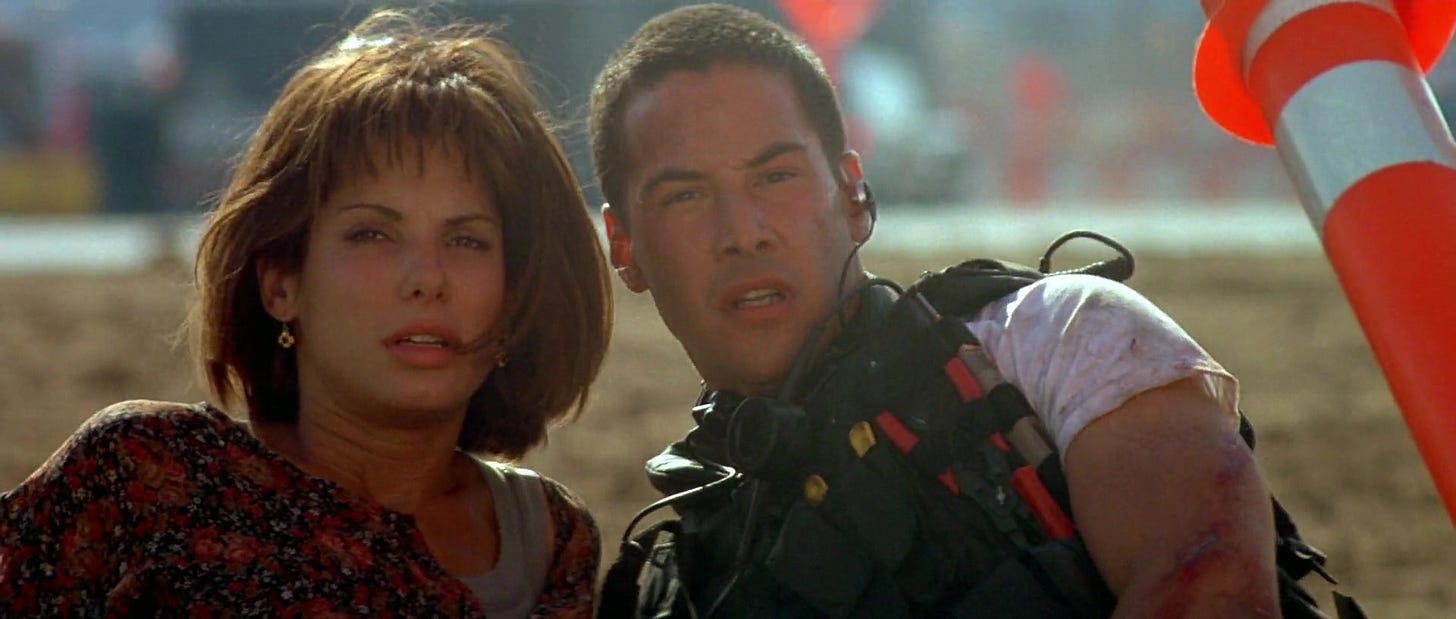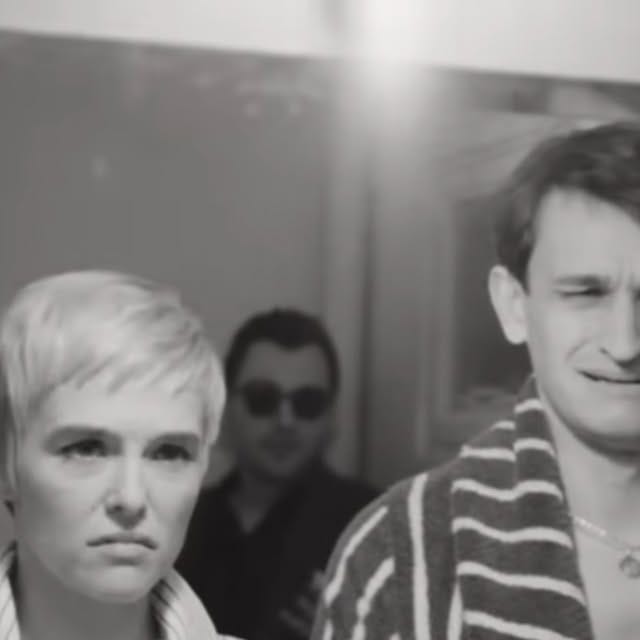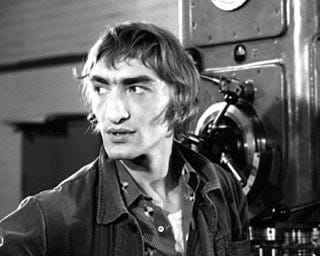◡◶▿ TIME05 | Sidechaining inner time-worlds
⚡ Applying Daft Punk's studio techniques to the cinema of Doubt. Plus: Scandal! Richard Linklater shoots Belmondo on electronic cobblestones. | New Systems of Time Week 5
📹 Unfound Peoples Videotechnic | Cloud-based filmmaking thought. ☁️
Dear eternal filmmaking students,
The previous newsletter was the 100th the school has sent! Were you counting? Did you celebrate? If not, don’t worry: in many ways, it means that this is the 101st. Nice number!
Let’s recap #100. “Temporal expressionism.” We learned how:
Maya Deren said that when the filmmaker “externalizes an inner world to the point where it is confounded with the external world,” that’s expressionism.
So, when the filmmaker externalises her movie’s inner time worlds, that’s temporal expressionism.
Temporal expressionism is a great way to use the full capacity of your cinematic tools to create and explore movie worlds and personal hang-ups.
In fact, maybe it’s the only decent way to approach the construction of time your movie and the production around it.
We also had a word about Mark Cousin’s new language for award ceremonies and Rhayne Vermette’s dark (as in you can’t see anything) new film about the sun. If you would like to read about that.
Missed a week? Joined late? Don’t worry about reading these lessons out of order. Each functions independently. They are sent in a sensible sequence but hardly reliant on it.
This week, we’re on part II of our “temporal expressionism” mini-series within our “New Systems of Time” daddy series.
And we’ll look at how:
💡 The filmmaker may express inner time worlds in an intuitive or more measured manner.
🌡️ When opting to extrapolate inner time worlds in a more measured manner, she may use a technique called “sidechaining.”
🔌 Sidechaining involves adjusting the behaviour of time in your movie directly in proportion to another variable, such as hero angst or yellow.
🍝 But if you sidechain more than one variable element, you could get yourself in a time-tangle!
After today’s micro-essay, there will be a brief discussion about the Richard Linklater Situation.
Sidechaining inner time-worlds
You can hear me deliver this lesson by scrolling up to the header and clicking Listen and/or the play ▸ button.
The filmmaker wields a kind of temporal expressionism if she:
Externalises the inner time-world of
one or more characters or
other diegetic elements.
And/or extrapolates this inner time world through
the outer world of the characters or
the movie’s production processes.
The filmmaker may express these inner time-world(s) using her intuition. Or she may engineer their outer expression in a measured fashion. For this, she may use the technique of sidechaining.
Sidechaining is the process of hooking up one variable element to control another value.1
The filmmaker may sidechain the diegetic flow of time to one or more characters. Or she may sidechain time or any other element of the diegesis, such as the weather or the music on a background radio.
For example:
The tempo of ‘time’ in the world of the movie may be directly modulated by the hero’s nausea levels.
Or as he gets happier, diegetic time stutters in proportion.
Another: each time your character receives a violent blow, a ‘moment’ is released.
Or another: the more intense the shadows grow, the faster the dolly rolls.
(Note that a mediaphysical marriage of this type has knock-on implications for the nature of the image volume.)
Clearly, if the filmmaker sidechains her film’s time system to multiple characters or elements, there’s going to be a lot of pushing and pulling going on. One character creating time stutter while another is smooshing time all together; the dolly triggered to accelerate when the dolly operator has already had his coffee break triggered by a diegetic micro-event.
In this case, she needs to make some decisions. Uh-oh!
Should the conflicting time pressures merge, clash, or mate?
Are some characters’ time pressures stronger than others? Or does it depend on the strength of each particular emotion?
(Reminder: hunger is an emotion.)
Does each time anomaly exist as a pocket or bubble around its source, or does it affect the entire diegesis?
What happens when the bubbles touch?
If the production’s decision-making processes are dealt with on a parallel timeline, these challenges can be processed as cleanly as any other creative choice.
But if the production’s decision-making processes are themselves sidechained into the movie’s time systems, the filmmaker could find herself hurried, interrupted, or left with too much (strange) time to think.
Please share your thoughts, queries, and exercises from this week’s lesson in the comments.
Next time | Temporal expressionism part III: Modes of temporal expressionism
Richard Linklater’s Tron: À bout de souffle
Here we go. Richard Linklater’s new pretend-behind-the-scenes-of-Breathless-(1960) (2025) is due out. Okay! Interesting. And it would actually be a cool idea if Nouvelle Vague tributes weren’t inherently nauseating2.
To Linklater’s credit, he’s approached the production in a sporting spirit. He’s dug out Raoul Coutard’s camera from a museum and even limited himself to the same number of ‘takes’ when recreating iconic scenes (from the perspective of the fictitious making-of crew).
Linklater also cast unknown looky-likey actors for the New Wave filmmakers and Belmondo & Seberg. The effect is hilarious and raises important questions about the use of looky-likeys in the age of AI. Certainly, Linklater has discovered a new region of the Uncanny Valley to explore.
And I was impressed that the movie’s “extras casting director” went out of his way to find looky-likeys for Breathless’s actual extras!
So it was heartbreaking to read that Linklater also pulled some David Fincher-style nonsense: dialling in a fake “cobblestones” filter for Breathless’s iconic final scene and “[digitally] paint[ing] away” unwanted backgrounds.
While this is not due the same criticisms as using AI, there’s definitely an overlap here. Mostly, in that it seems like an awful lot is lost by defaulting to a computer solution to a physical-realm cinematic challenge.
Particularly when you think of Chantel Akerman’s Portrait of a Young Girl at the End of the 60s in Brussels, shot in the 1990s and brazenly having its late Nouvelle Vague-era characters browsing through CD racks while talking about stealing records as boxy late-80s VW Golfs cruise by in the background. Brazen anachronisms are a valid New System of Time!
Akerman’s anachronisms could have been a good solution for Linklater: drop Godard’s atomic age production into 2025 Paris, or better still, Austin, TX. I imagine somebody’s already remade it in Grand Theft Auto.

Anyway, Linklater features significantly in a forthcoming lecture in our New Systems of Time series. So look out for that. If you’re not too annoyed already!
By the way, the Principal’s wife and I saw an exact looky-likey of a 50-something Gottfried John on the street a couple of years ago and stopped dead in our tracks. Foolishly, we let him get away - but we might have a gig for him now if you happen to spot him at the shops.
Tonsils
Thank you, students, for your well-wishes last week. Wasn’t tonsillitis. It was viral. But my doctor - who looks and sounds reassuringly like she has lots of books at home and listens to Radio 4 - told me it “could be just as awful as tonsillitis.” So your wishes were not misplaced.
~Graeme Cole.
(Principal)
P.S. Pertinent song recommendation:
Bill Nelson, “Acceleration”
🦋 Bluesky | ⏰ TikTok | 📸 Instagram | 😐 Facebook | 🎞️ Letterboxd | 🌐 unfound.video
Sidechaining is not exclusive to time modulation. It originated as a technique to defuse the hissing s’s of early film dialogue. And it has flourished in sound mixing and in the music recording studio (a la Daft Punk). You can sidechain anything you can measure - even in your personal life!








I decided to sidechain the time to a clock on the wall of the protagonist's kitchen. Unfortunately she forgot to but batteries in the clock. Nevertheless the final film makes for a lovely photo.